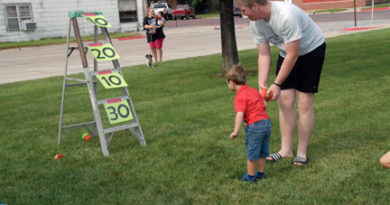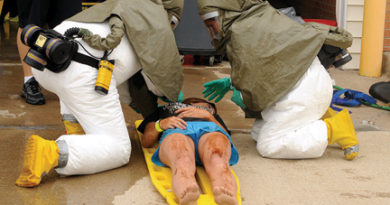Nebraska legislative bill introduces school safety and security reporting act
By Brooke Wrage
Nebraska News Service
State senators are considering a bill that would create an anonymous reporting system for potential threats, assault, mental health concerns in all Nebraska K-12 schools.
Had there been a system in place like bill 322 five years ago, Mark Adler is certain that his son, Reid Adler, would still be alive today.
At 15 years old, Reid Adler took his own life. Mark Adler, superintendent of Ralston Public Schools, shared his son’s story as he testified in support of the bill.
“Reid was a victim of continuous cyberbullying, to the degree that he could not take it any longer,” Adler said. “The successful passage of LB 322 would make a big impact on all public and private schools in Nebraska.”
The proposal, introduced by Sen. Matt Williams of Gothenburg, would require public and private schools in Nebraska to have trained crisis management teams staffed 24 hours a day, 365 days a year.
The current safety requirements and guidelines from the Nebraska Department of Education include prevention, preparedness, response and recovery. There is no reporting system in place for all schools.
According to Williams, the bill would minimize the potential risk of targeted violence, including self-harm, harm to others, or school property.
Mark Adler said his son had shared his intentions to take his own life with at least six of his classmates at Ralston High School.
Four out of five times, someone knows when a suicide or self-harm incident is about to happen, said Jolene Palmer, the Nebraska school safety and security director with the Nebraska Department of Education.
The proposal would establish a statewide reporting system where students, parents, school personnel and community members could relay concerns and information anonymously so that, “an intervention could be possible to prevent the unthinkable thing,” Palmer said.
Mental health has become an increasingly pressing issue, and according to Williams, when it comes to keeping kids safe, there is no such thing as having too many helpful resources.
“I think we all know that mental health issues have been on the rise across our country. Suicides among young students aged 10 to 24 rose 57% in the past 10 years and has continued to rise during the pandemic,” Williams said.
A pilot program in Boys Town was conducted in schools in Douglas County. The program began shortly after the pandemic started in 2020.
Williams said 81% of the pilot program calls were diverted away from law enforcement, not to law enforcement.
Since the program began, there were 470 reports, varying from suicide threats, drug use or misuse, bullying or cyberbullying, depression or other mental health-related issues or concerns and threats against property.
“This prototype works to de-escalate crises and utilize least restrictive methods to ensure safety while minimizing law enforcement interaction,” Williams said.
According to Palmer, the information reported to the hotline is verified by the crisis management teams, as they are trained to assess and validate the information. If pranking becomes an issue, further rules would be established.
The proposal is designed to reduce the mental health and safety concerns in Nebraska.
The report line called Safe2HelpNE would be accessible to all K-12 public and nonpublic schools through telephone, mobile app, text or email.
There are about 400,000 people, including teachers and staff in Nebraska schools.
With the School Safety and Security Reporting System, anyone would be able to report threats such as:
– Bullying
– Stalking behavior
– Cyber or electronic harassment
– Bomb threats
– Family violence
– Physical or sexual abuse
– Threat to property
Behavior indicative of extremism or terrorism
– Assault or attack
Use of inappropriate weapons
– Mental health or substance use concerns
– Sexual exploitation or predation
– Direct or indirect threatening statements
The call center would automatically send the information to the local threat assessment team for that particular school.
The threat assessment team would be a school-based team of at least five members who have completed training. These members may include but are not limited to the principal or the principal’s designee, a mental health professional, and a school staff member.
The required training would include:
Threat assessment and management processes
Suicide prevention
Recognizing mental illnesses and emotional disturbance
Provided knowledge and skill to allow threat assessment teams to work collaboratively to conduct threat assessments
Increase awareness of threats among school staff, students, and the public
Interrupt violence in the planning stage to thwart potential harm to people and property
Additionally, the Safe2HelpNE report line staff would have access to clinical consultation seven days per week, 24 hours per day, from a licensed mental health professional.
This system is different from most hotlines or reporting systems as the goal is to avoid involving law enforcement and focus on de-escalating threats.
However, Sen. Patty Pansing Brooks of Lincoln brought up concerns about the “school-to-prison pipeline.”
The pipeline refers to a disproportionate tendency of minors and young adults from disadvantaged backgrounds to become incarcerated because of harsh school policies.
The bill is estimated to cost $900,000.
“I don’t think we can afford not to do this,” Williams said.
Ginny Gohr, director of Boys Town Voicemail National Hotline, testified in support of the bill.
“A statewide anonymous reporting system as outlined in LB 322 is essential for identifying individuals who are in immediate danger, stopping threats before they turn into action, and more importantly, saving lives,” she said.
Other proponents of the bill include Steve Cerveny, a captain with the Omaha Police Department, Jeremy Ekele from the Nebraska Catholic Conference, Bill Jelkin, director of Student Services from Omaha Public Schools, and Mario Scalora, a psychology professor from the University of Nebraska-Lincoln.
No opponents testified during the hearing.




